This post may contain affiliate links, which means I’ll receive a commission if you purchase through my links, at no extra cost to you. Please read full disclosure for more information.
A classic of Japanese cuisine, these chicken and vegetable gyozas are deliciously fried on one side in sesame oil, then steamed. Crunchy on one side and soft on the other, they're topped with a super gourmet mix. Believe me, you'll never buy ready-made ones again!

💙 Why you'll love them
- As good as or better than Asian restaurants: they require a little patience to prepare, but they're so worth it!
- Adaptable: they can easily be made vegan or vegetarian, so you can adapt them in a thousand and one ways.
- Simple ingredients : they contain only ingredients that are easy to find and use.
- Batch cooking : you can make a lot at once and freeze them to enjoy later.
🍗The ingredients
These are the main ingredients, and the quantities can be found in the recipe card below.
- Store-bought gyoza wrappers or wonton wrappers: you'll find it in Asian grocery stores, in some supermarkets and in Cuisine du Monde. If you can't find any, I'll also tell you how to make homemade gyoza dough.
- Vegetables: leeks (in season from September to April inclusive), carrots (in season from September to March inclusive) and button mushrooms (in season all year round).
- Chicken: I recommend chicken breast.
- Ginger: use fresh ginger that you scrape and grate at the last minute - it's so much better!
- Salted soy sauce, of course, to give the filling a delicious flavour.
- Garlic - if you want to choose your garlic carefully so you do not encourage the slavery of Chinese prisoners, read my Eco Tips on the subject.
- Sesame oil for cooking, which will lightly flavor the gyozas.
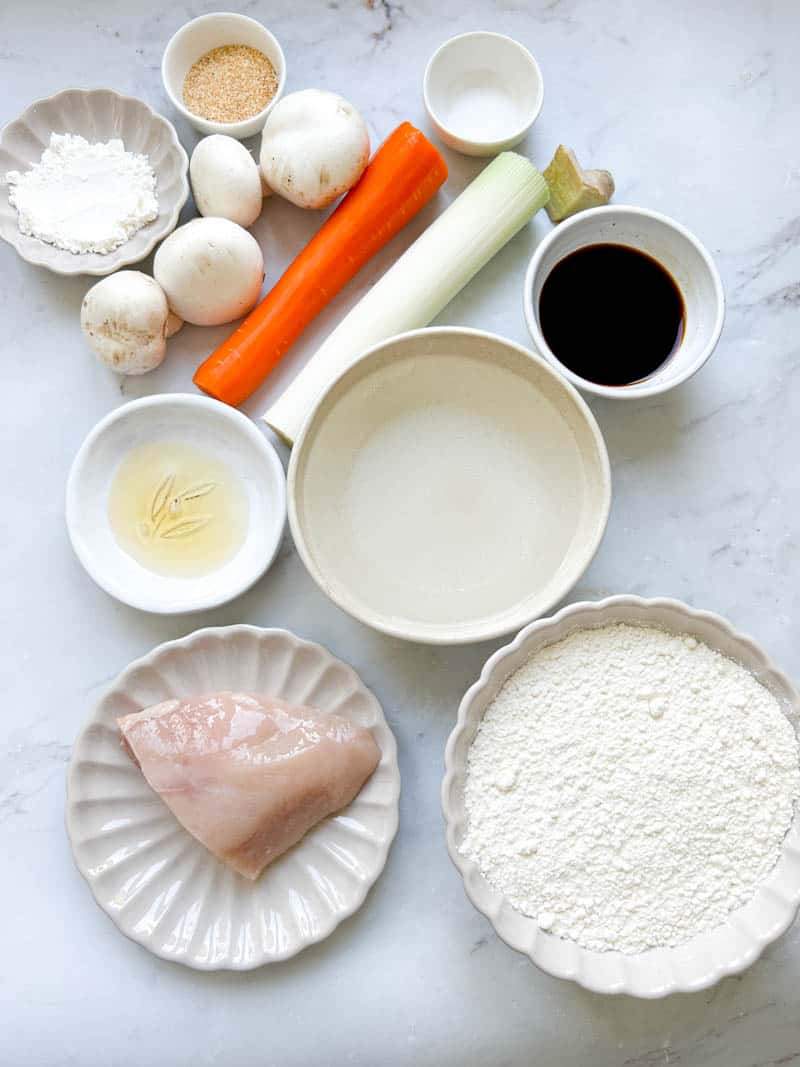
🧅Variations
Feel free to adapt this recipe to your own tastes. I suggest several options:
- Pork: Japanese traditionally use minced pork in gyozas. I prefer chicken here, but feel free to change! You can also use minced shrimp, minced beef or even minced lamb for a gourmet twist.
- Vegetables: you can add or replace the vegetables suggested with white, red or spring onion, white or red cabbage, sweet potato, eggplant, zucchini (for totally European versions, I grant you, but absolutely delicious), Shiitake mushrooms, etc...
✨How to make gyozas?
Recipe details and quantities can be found in the recipe card below.
With homemade dough
If you make your own gyoza dough, here are the different steps (if not, you can scroll down to see the other steps):
- Mix the flour with the boiling salted water, and add all at once.
- Leave to knead until the mixture forms a ball. Retrieve it and knead it for 5 minutes to soften it further.
- Leave to cool completely, then refrigerate for 30 minutes in a hermetically sealed bowl.
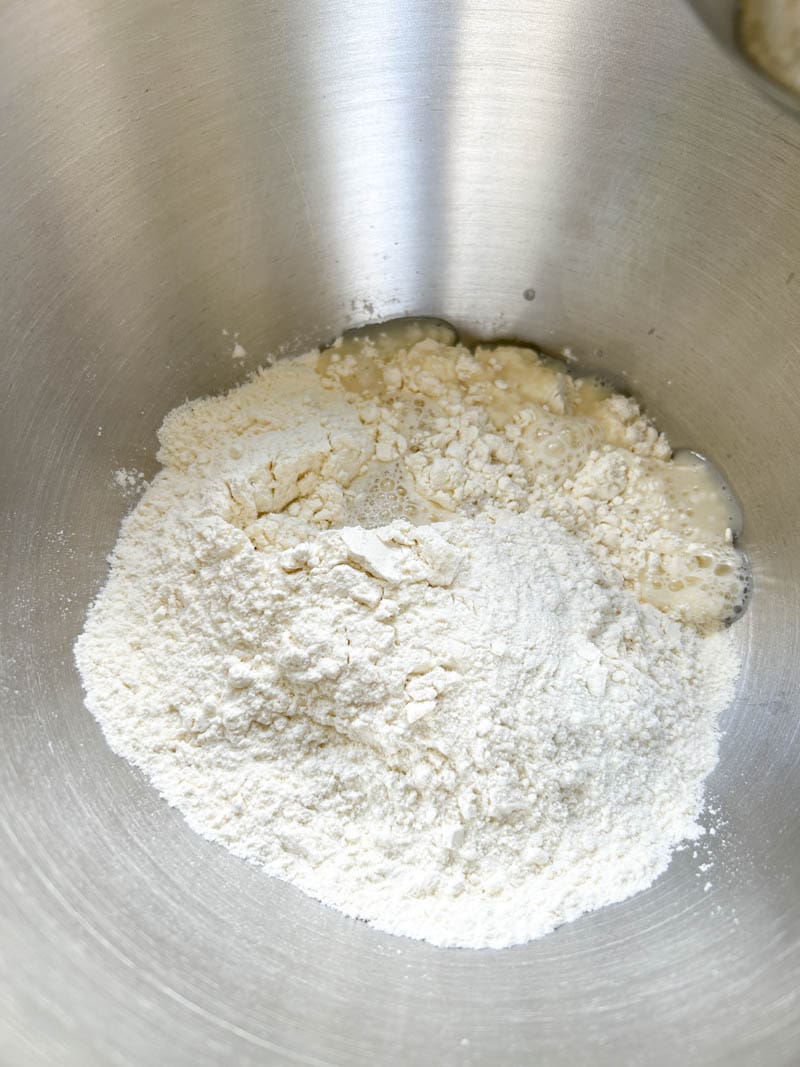
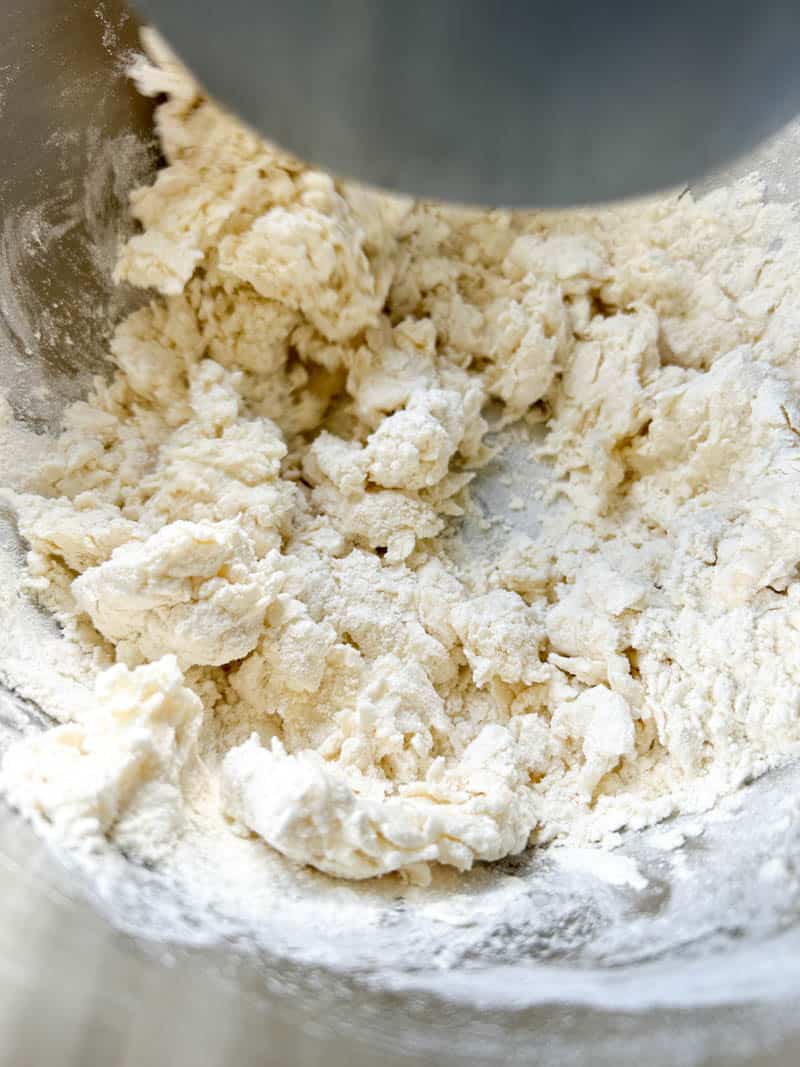

- Put a little cornflour on your work surface and cut your ball into quarters.
- Roll out the first piece with a rolling pin until the dough is very thin (2-3 mm).
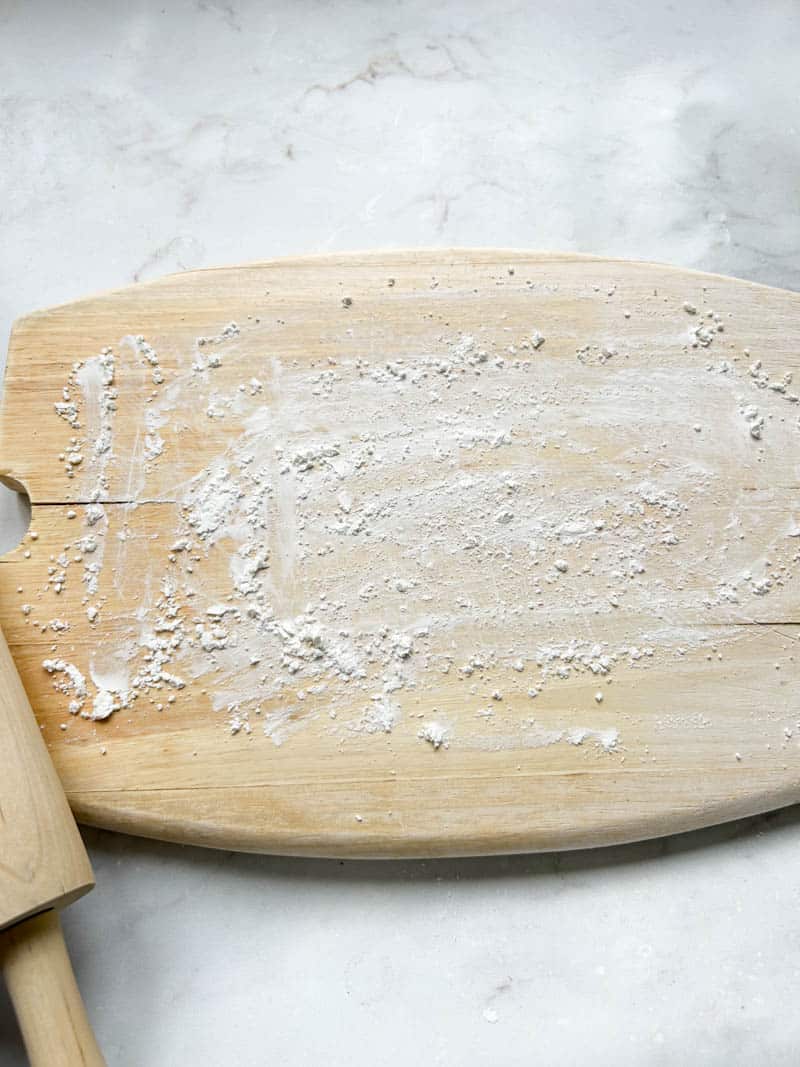
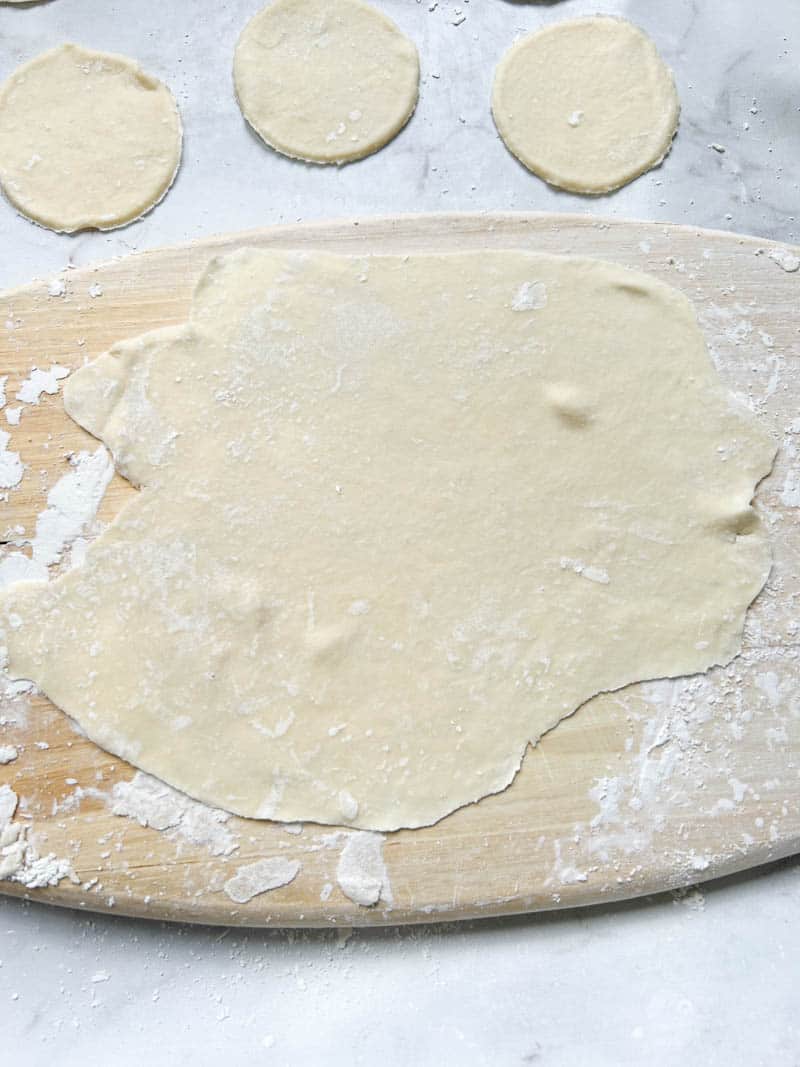
- Using a 10 cm diameter glass (more or less), make disks. Reshape a ball, rescale it and reshape discs. Repeat until there is no more dough.
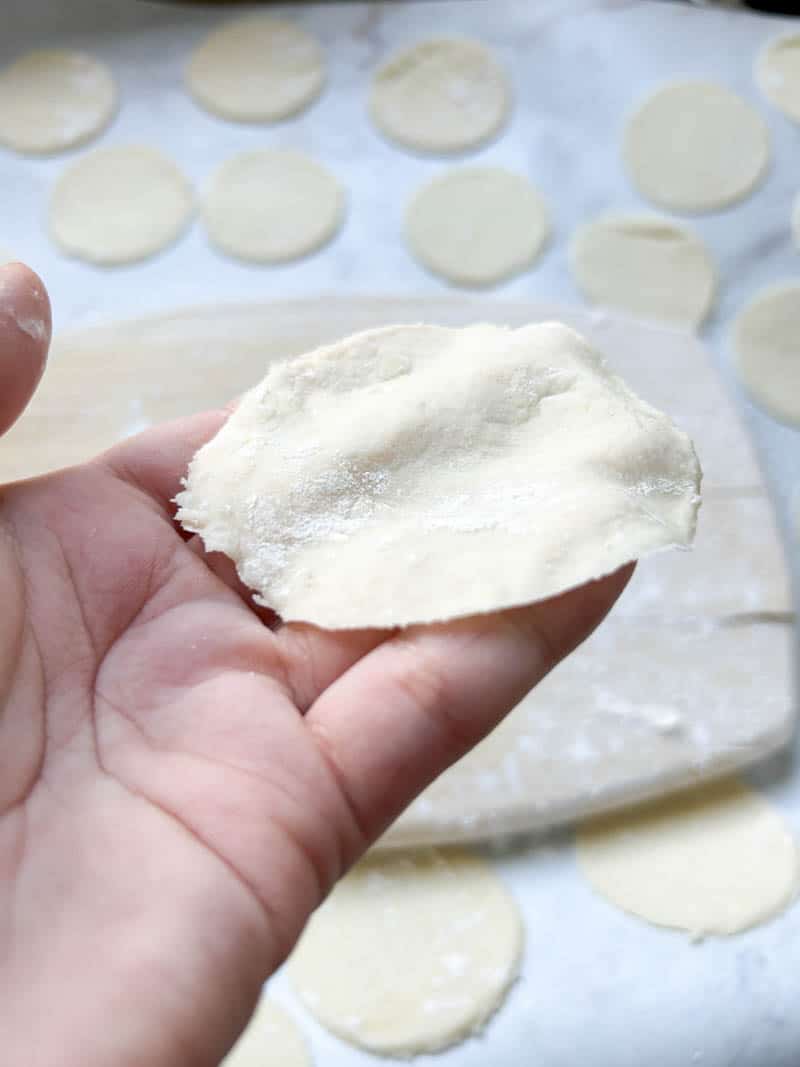
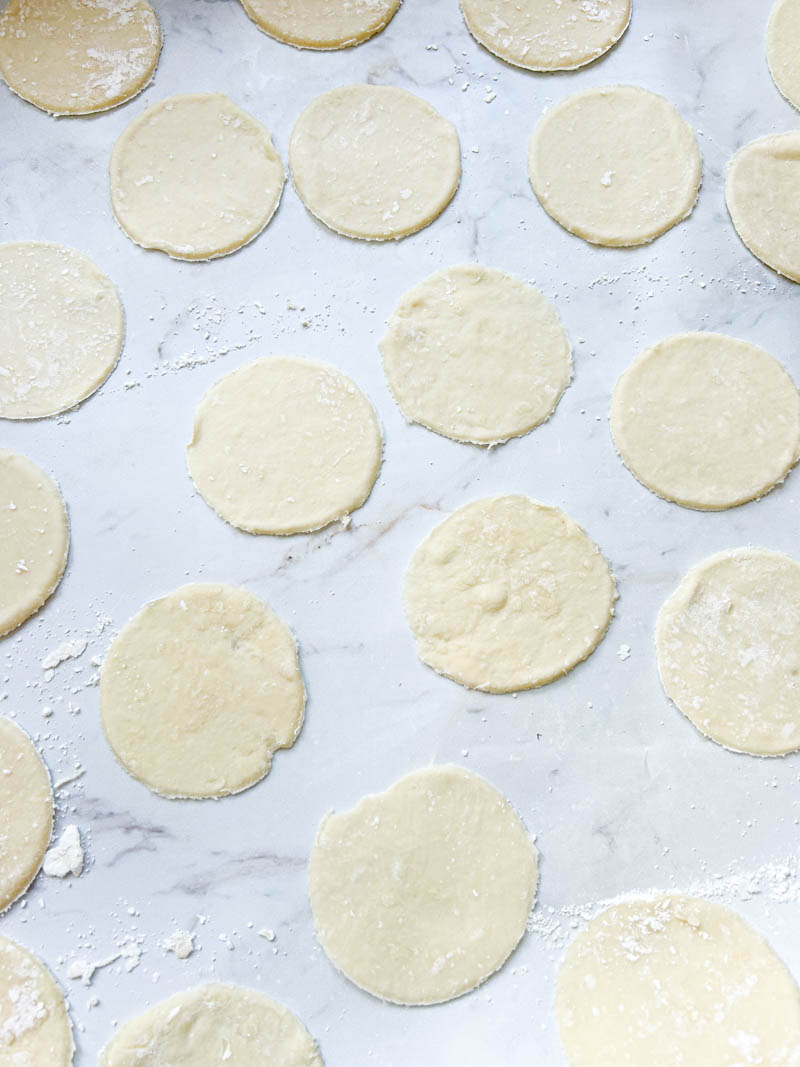
The trim
- Chop all the filling ingredients as finely as possible and mix with the soy sauce, garlic powder and sesame oil.
- Place 1 teaspoon of filling on each disc
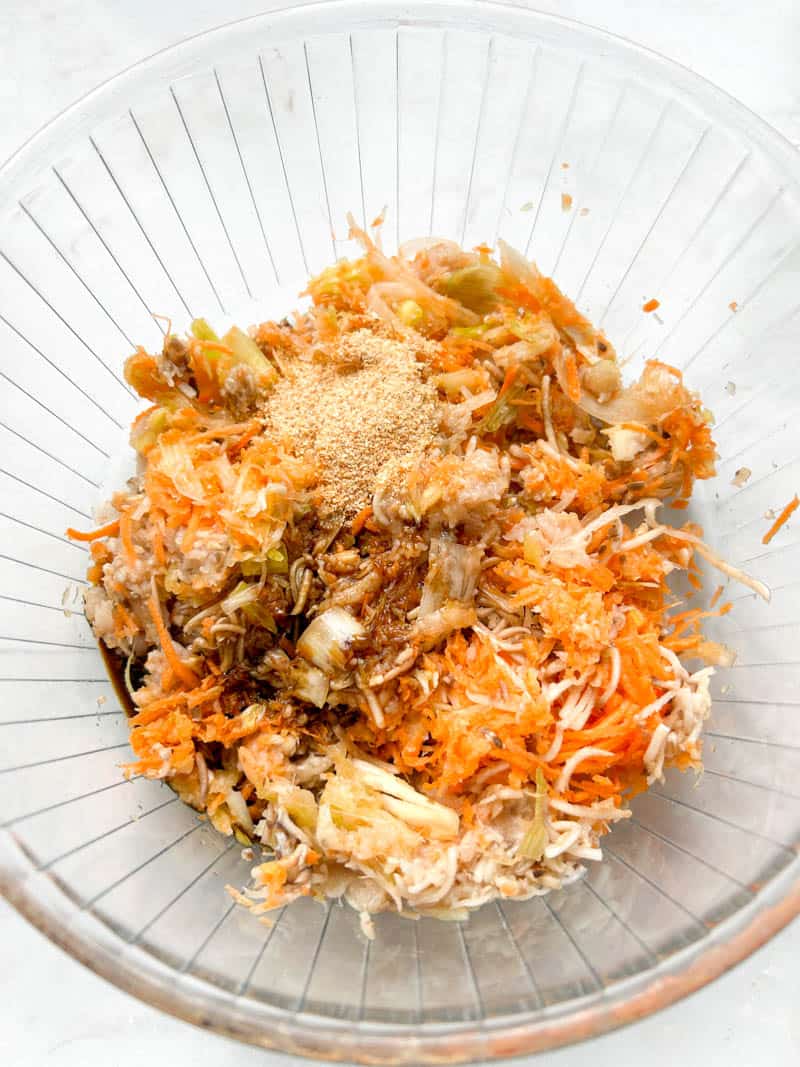
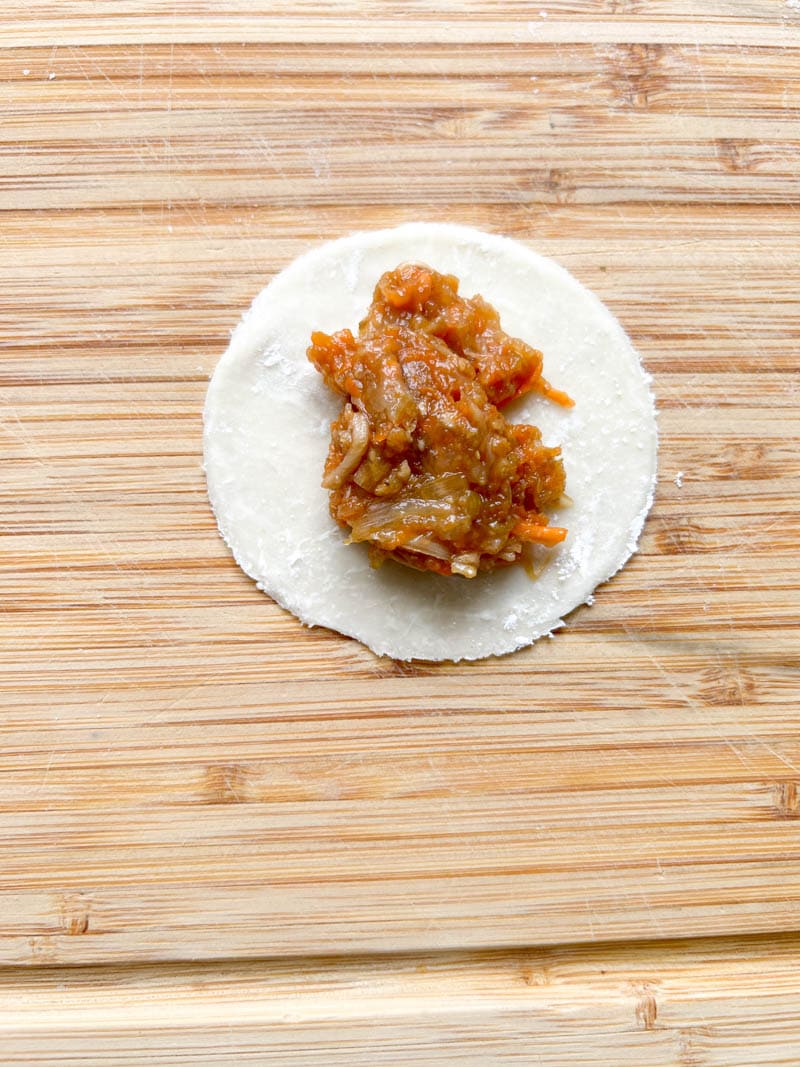
- Fold the gyozas: take a filled disk in your hand and fold it into a half-moon shape. Next, bring a small piece of the bottom half and glue it to the top half.
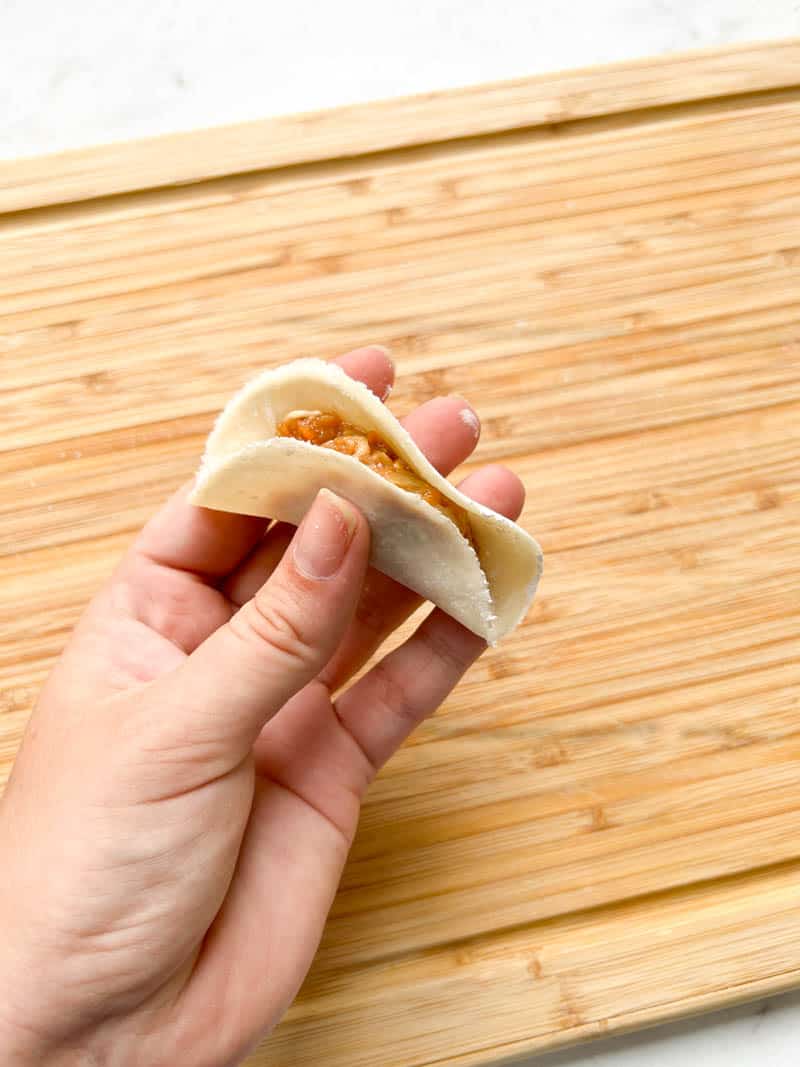
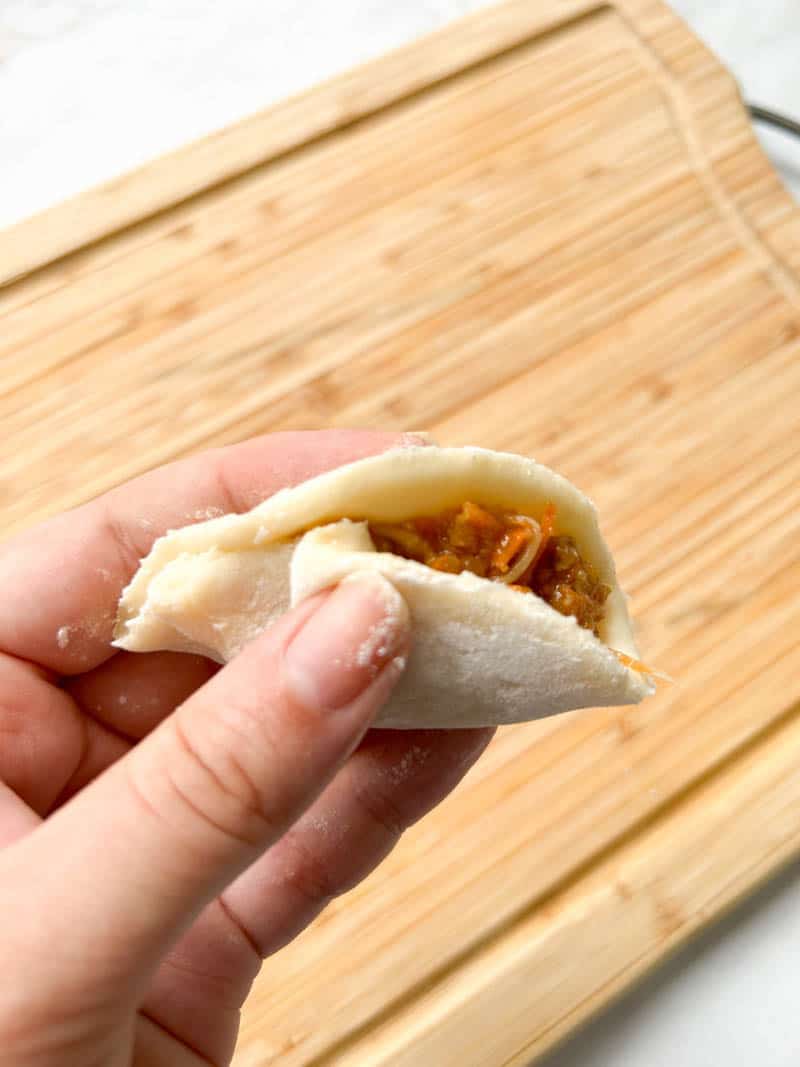
- Repeat until the gyoza is completely closed.

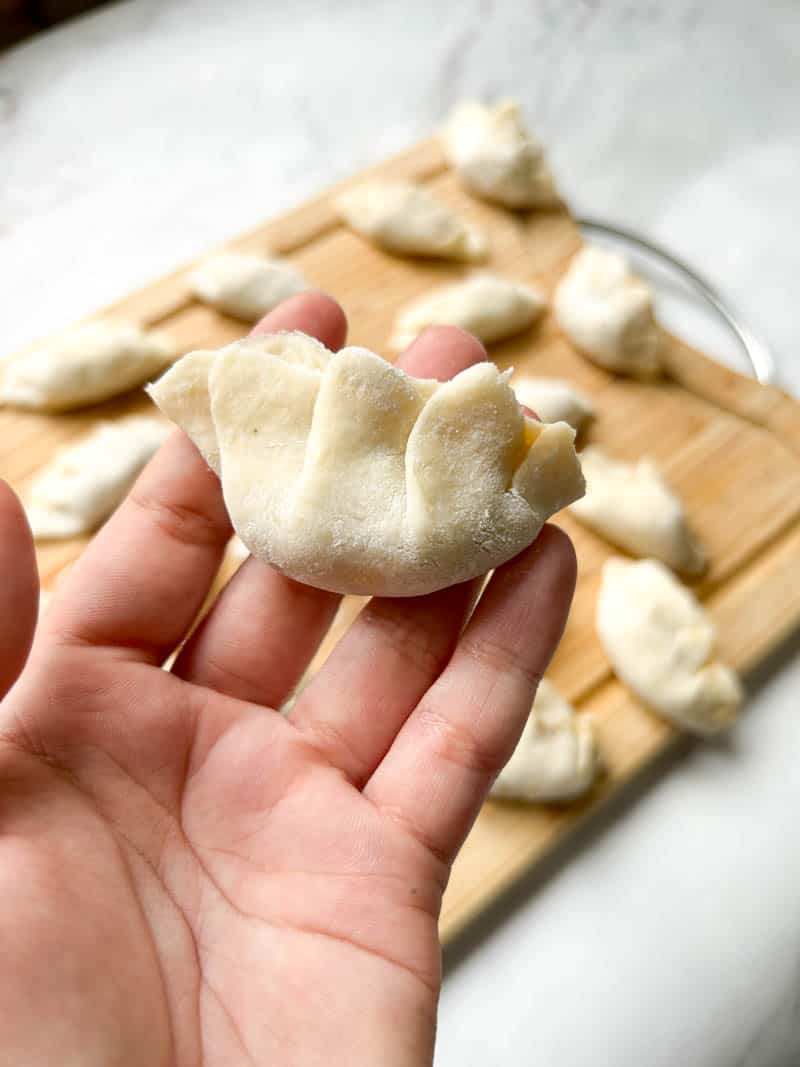
Cooking
- Put the sesame oil in a hot pan over high heat and place the Gyozas on the smooth side. Cook until golden brown on the underside.
- Lower the heat to medium, add the water and cover. Leave to cook for a few minutes.
- Remove the lid and cook until all the water in the pan has evaporated. Repeat the process with the remaining gyozas.
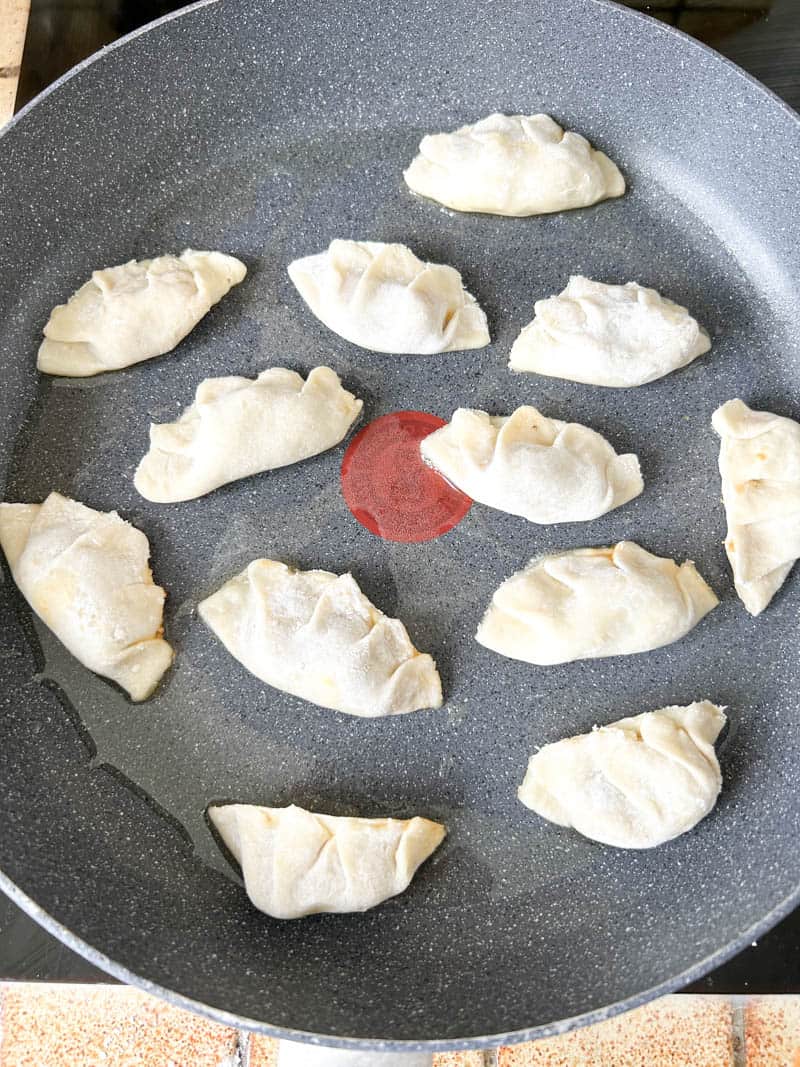
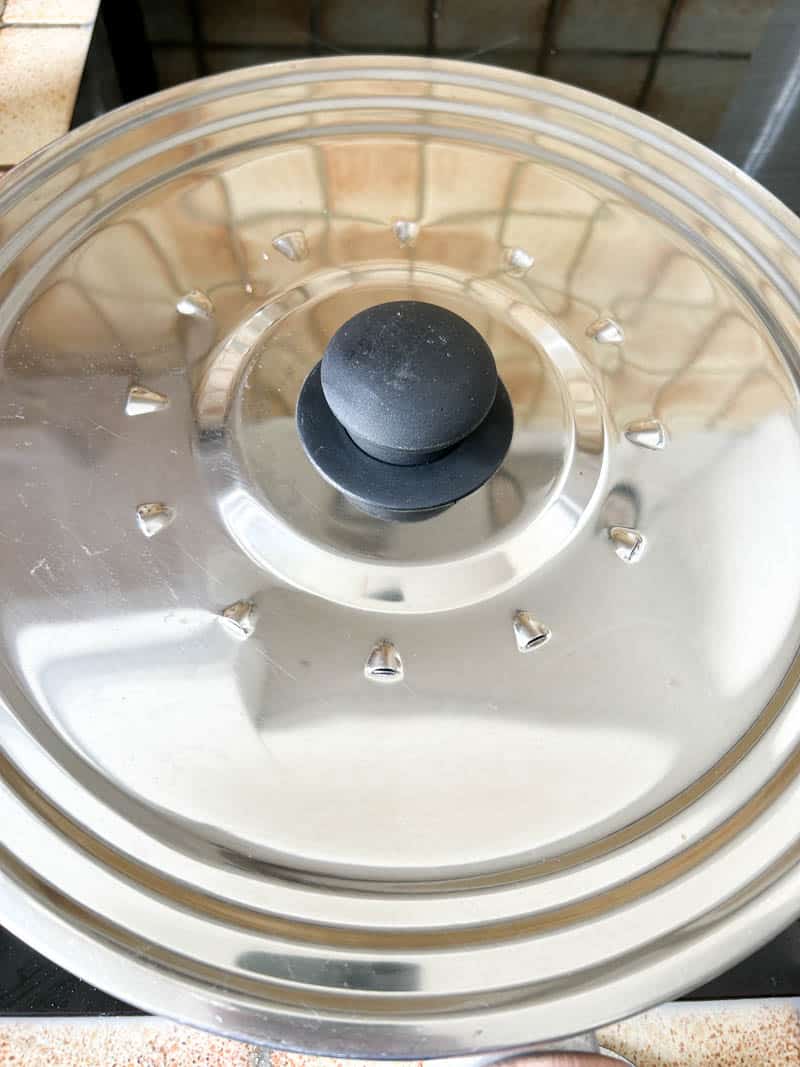
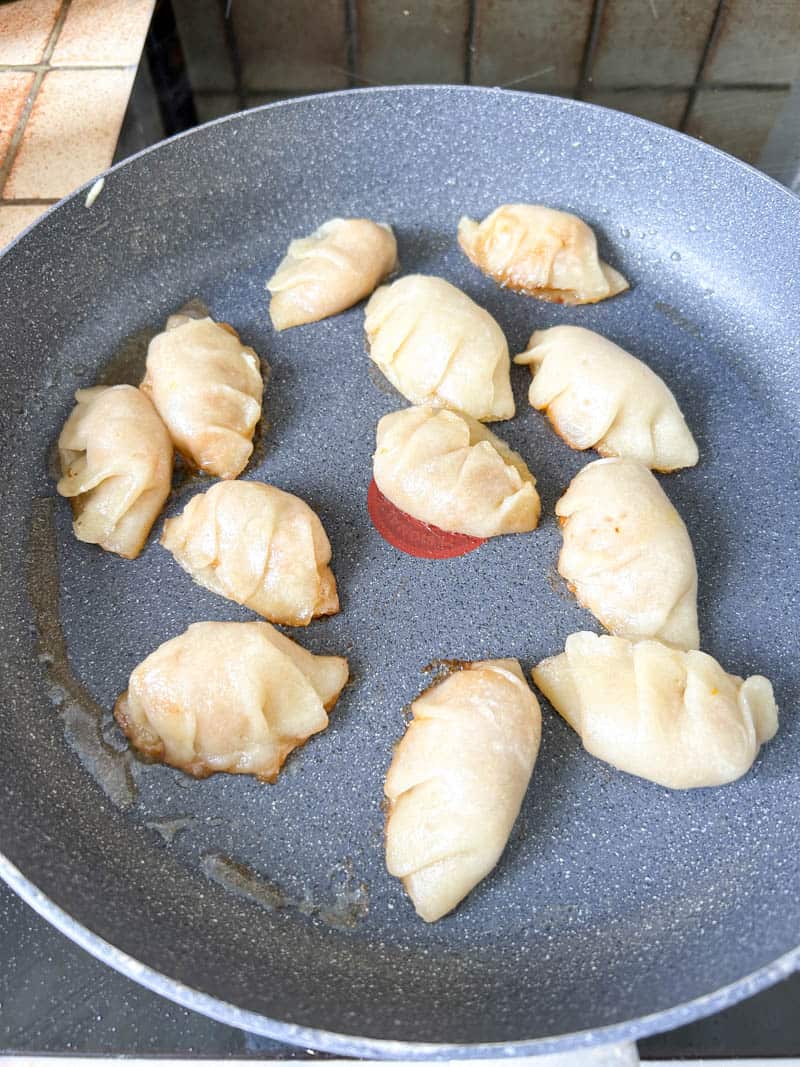
✅Vegan version
Replace chicken with vegetable chicken strips, tofu, seitan, tempeh or the meat substitute of your choice.
👩🏻🍳Chef's Tips
If you make your own gyoza dough
- Boil the water: it's crucial that you use boiling water, which is much better absorbed by the flour.
- Add the water all at once to the flour: once you've added the salt to your boiling water, add it all at once to the flour, not a little at a time. This way, the flour will absorb it well. If you add it a little at a time, the flour won't be able to absorb it and you'll end up with an ultra-liquid dough.
- Thickness: roll out your gyoza dough so that it is fairly thin (I recommend 2-3 mm).
- Always keep your hands dry: gyoza dough, especially if homemade (and a little if bought ready-made) can quickly become sticky, so handle it with dry hands.
- If the dough dries out : shaping and garnishing the gyozas may take some time. You may find that your dough dries out and the edges no longer stick together. Simply wet one of your fingers in water and run it over the edge of your discs.
Cooking gyozas
- Cook your gyozas in several batches: don't put them all in the pan at once, cook them in several batches, it'll be much easier.
- For crispy gyozas: once you've cooked your gyozas in the oil, then added the water and lid, don't skip the step where you remove the lid and leave to cook for a few minutes longer. That's what's going to make all the difference.
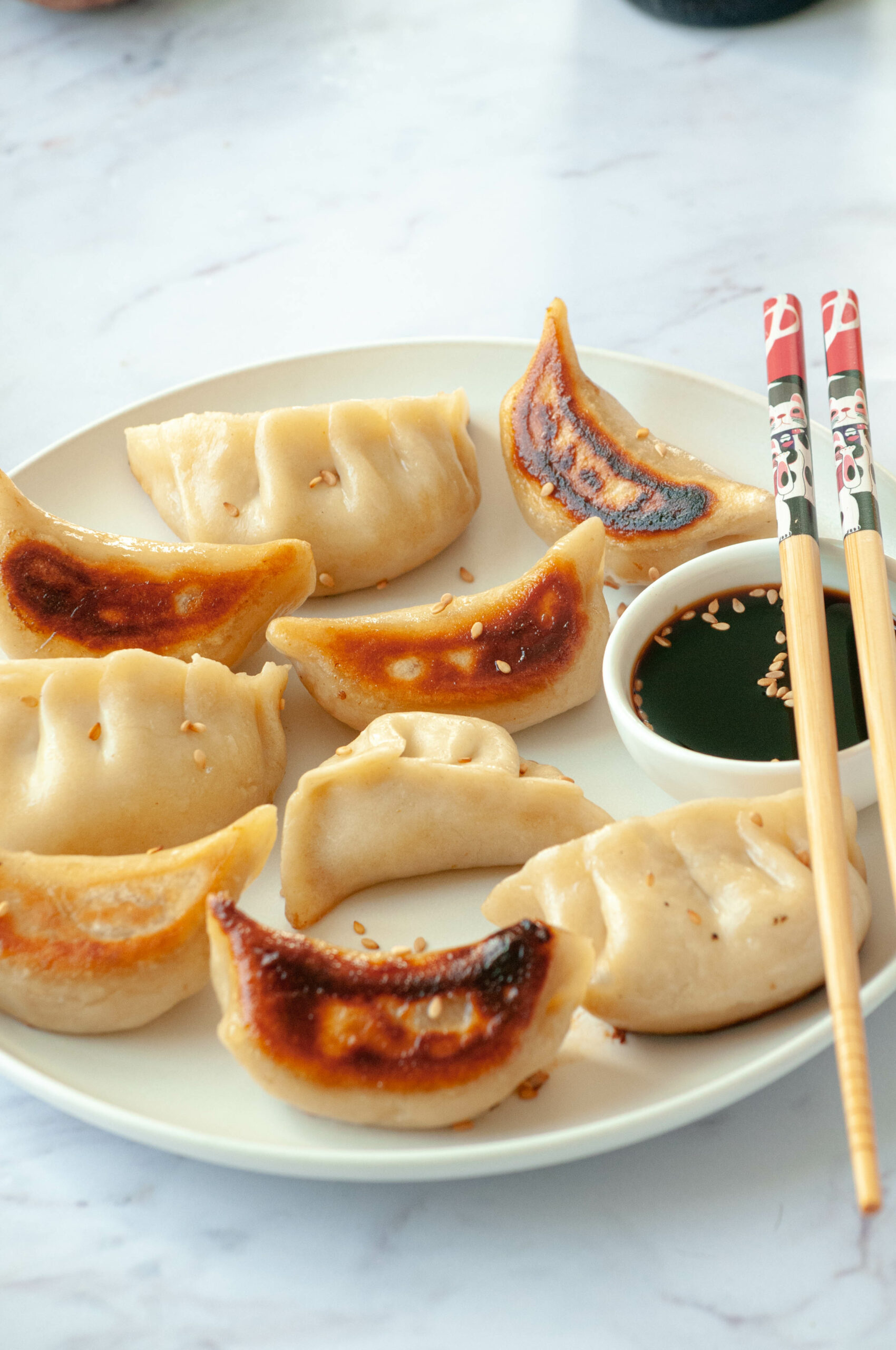
💡Frequently Asked Questions
You can replace them with wonton wrappers (they are square, so cut them in half to get the typical oval shape of gyoza) or make homemade gyoza wrappers. I'll provide you with my recipe in the recipe card below.
Yes, of course. I recommend preparing them in advance and freezing them raw (see details below).
Don't throw it away! You can sauté the leftover filling in a pan and serve it with noodles; it's delicious!
Certainly, it will give you super crispy gyoza, and it will be delicious! To do this, skip the step with water in the pan and cook the gyoza on both sides in sesame oil.
The main difference lies in the cooking method. Gyoza is pan-fried on one side to become crispy, whereas dumplings are typically steamed (cooked in water).
In fact, gyoza is an adaptation of Chinese dumplings (jiaozi) with thinner dough and a finer filling. When the Japanese tried to recreate jiaozi after returning from China, they made slight changes to the dough and filling, which is how gyoza came into existence!
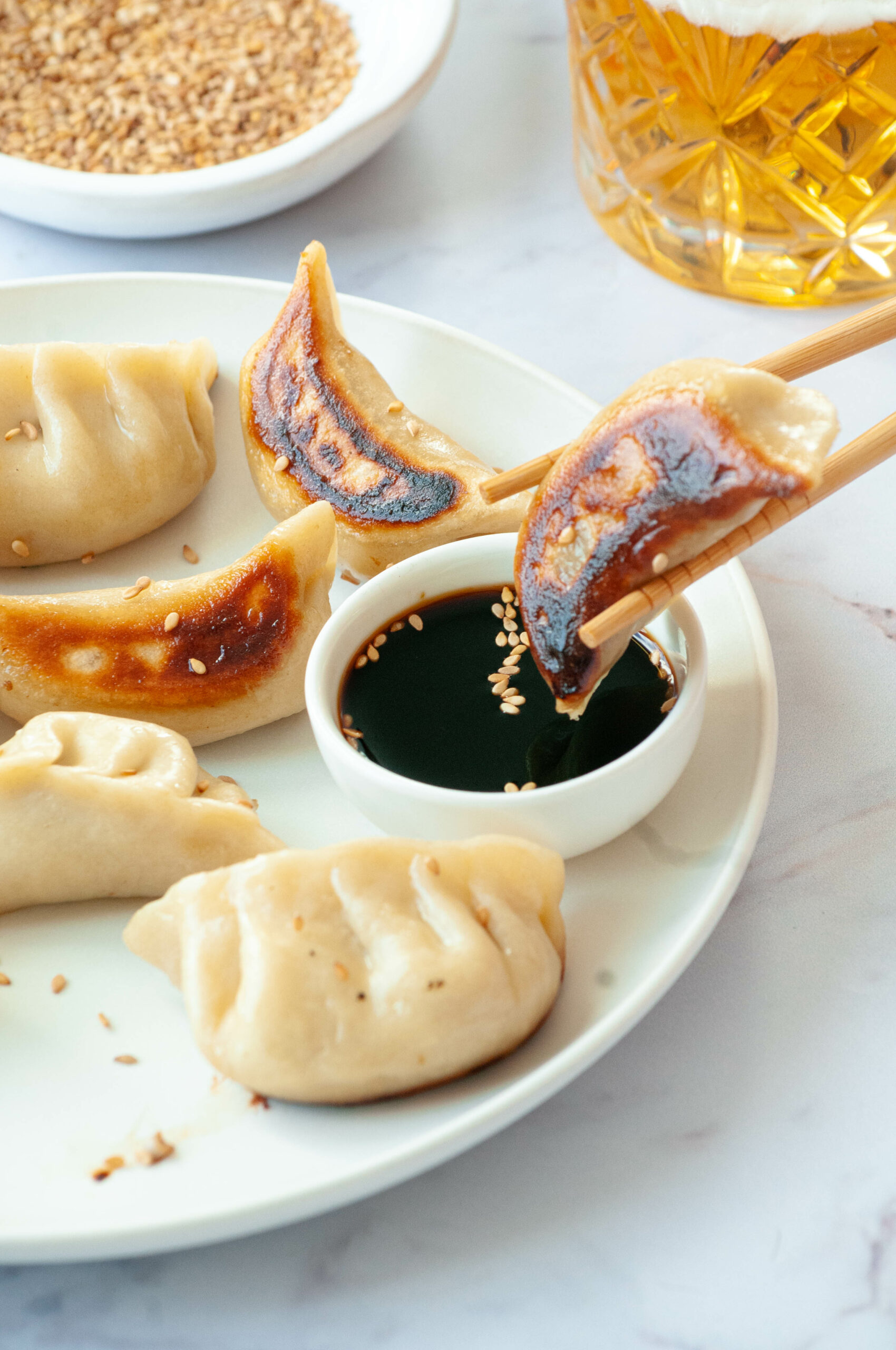
❄️Storage and freezing
Store - reheated gyozas are often soft and not very tasty. I recommend freezing them if you can't enjoy them immediately after making them.
Freezing raw gyozas
This method is really my favorite because I find that you get all the crispness of the gyozas when you defrost them.
- Freeze raw gyozas: place them on a plate or baking-paper-lined tray in your freezer for 2 hours, to pre-freeze. Once pre-frozen, place them in a freezer bag on which you have previously written the date and name of the recipe. You can keep them for 3 months.
- Defrosting raw gyozas: cook them as recommended in the recipe, although they may take a little longer to thaw properly.
Freezing cooked gyozas
If you find you've baked too many gyozas and can't eat them all, freeze them!
- Freeze cooked gyozas: place them on a plate or baking tray lined with baking paper in your freezer for 2 hours, to pre-freeze. Once pre-frozen, place them in a freezer bag on which you have previously written the date and name of the recipe. You can keep them for 3 months.
- Defrost cooked gyozas: fry or bake for a few minutes at 150°C. Especially avoid the microwave, which will make them soft.
📖 Recette
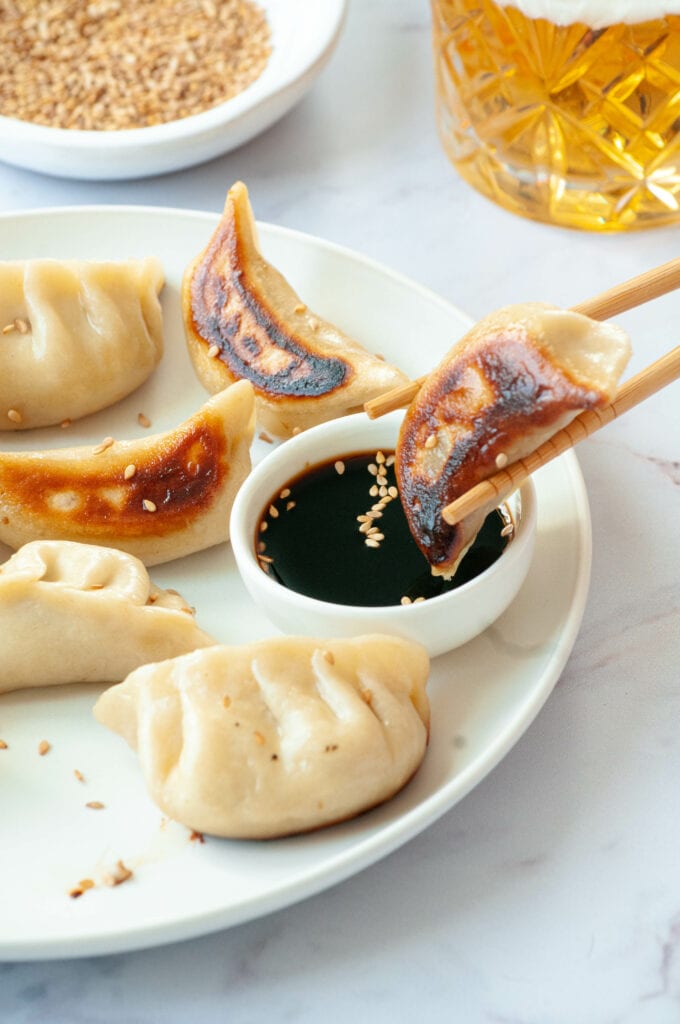
Easy chicken and vegetable gyozas
Ingredients
- 1 store-bought gyoza wrappers or wonton wrappers
If you want to make homemade gyoza wrappers
- 1 cup water + 2 tablespoons
- 1 large pinch salt
- 1 ½ cup all-purpose flour + 3 tablespoons
- A bit cornstarch
For the filling
- 1 ¼ cups leeks white part
- ¾ cup carrot
- 2 cups chicken
- 1 cup mushrooms
- ½ inch piece ginger
- 4 tablespoons soy sauce
- 2 tablespoons garlic powder
- 1 tablespoon sesame oil
For cooking
- 2 tablespoons sesame oil
- 4 tablespoons water
Instructions
- If you have ready-made gyoza wrappers, skip directly to "The Filling"
If you want to make homemade gyoza wrappers:
- Boil the water (in a kettle or saucepan), then pour it into a container with salt and set it aside.
- In the bowl of your food processor, add the flour and then pour in the salted water all at once (or knead by hand). Let it knead until the mixture forms a ball. Retrieve the ball and knead it for 5 more minutes to further soften it.
- Let it cool completely and refrigerate it for 30 minutes in a tightly sealed bowl.
- Then, sprinkle some cornstarch on your work surface and divide your ball into four portions. Roll out the first portion with a rolling pin until the dough is very thin (1 or 2 mm).
- Use a 4-inch diameter glass (approximately) to cut out circles. Reform a ball, re-roll it, and form more circles. Repeat until there's no more dough left.
The Filling:
- Finely chop all the ingredients, or use a chopper or the chopping function of your food processor if available. Then, add soy sauce, garlic powder, and 1 tablespoon of sesame oil, and mix.
- Place 1 small teaspoon of filling on each circle, then fold them (see the step-by-step process above in the article). Be careful not to overfill, or they may tear when you try to seal them.
Cooking:
- In a hot frying pan over high heat, add 2 tablespoons of sesame oil and place the Gyoza dumplings on the smooth side. Cook for a few minutes until they are well browned on the bottom.
- Reduce the heat to medium, add water, and cover with a lid. Let them cook for 3-4 minutes, then remove the lid and let them cook further until all the water in the pan has evaporated.
- Repeat the process with the remaining gyoza dumplings and enjoy!
Nutrition
This post contains affiliate links: if you order a product via the clickable links, a small commission will be paid to me. Believe me, I only recommend products that I like and use personally. And it's also what allows me to offer all this free content.

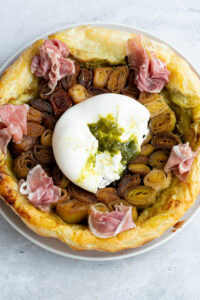
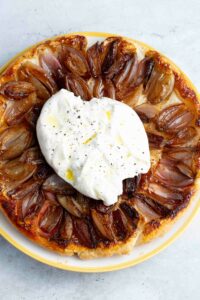
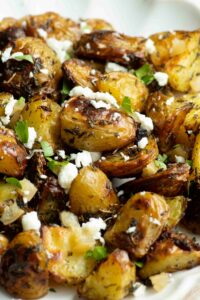
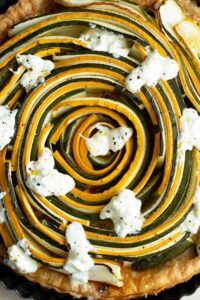
Répondre